What is cable?
Cables are nothing but insulated interconnection equipment used to transmit electrical energy and communication signals. There are many types of cables are being manufactured as per our application requirement. However, in this article, we are going to deep dive into the various type of electrical cables.
Type of Power cables:
Power cables are the well-insulated ability to carry high current with high voltage from the generation station to the distribution station. Types of electrical cable are depending on voltage level, installation, insulation, type of conductors, Number of the conductor, and type of construction.
Types based on Voltage:
Voltage is an important factor when designing a cable. Based on the voltage the type of electrical cables varies as,
- Low tension cables (LT): The cables which are having a voltage level of below 1.1kV called LT cables. Such cables are used in the application below 1.1kv such as domestic and industrial applications. Mostly PVC or XLPE insulation are used.
- High Tension Cables (HT): Such cables are operating less than 11kV. They are used in the input of any transformer/generator which is having 11kV as the input voltage. XLPE insulation is used.
- Super Tension Cable: (ST): It has an operating voltage level of up to 33kV. XLPE and glass insulation are used. Dielectric stress will be 40kV/cm.
- Extra Super Tension cables (EST): The cables whose operating voltage is more 33kV such cables are called as Extra super tension cables. Low viscosity mineral oil + XLPE + Glass combined insulation are used. The main advantage of oil insulation cables is the oil will not ionize at the high voltage. The weight of the cable is very high. They are preferred to lay underground.
Type-based on the installation:
Cable installation is classified into three categories such as,
- Overhead cables: The cables are laid in open space with the support of the cable tray. The outer part of the cable is visible in normal eyes. The cable failure is less.
- Under Ground cables: The cables are laid underground. They have many advantages of Higher safety, less space, less cost and 5% high current carrying capacity.
- Submarine Cable: A waterproof cable will be laid under the water i.e Sea, such cables are called submarine cables.
Type Based on the Insulation:
Why insulation is important? Insulation is the outer part of the conductor. It should have high-temperature stability.
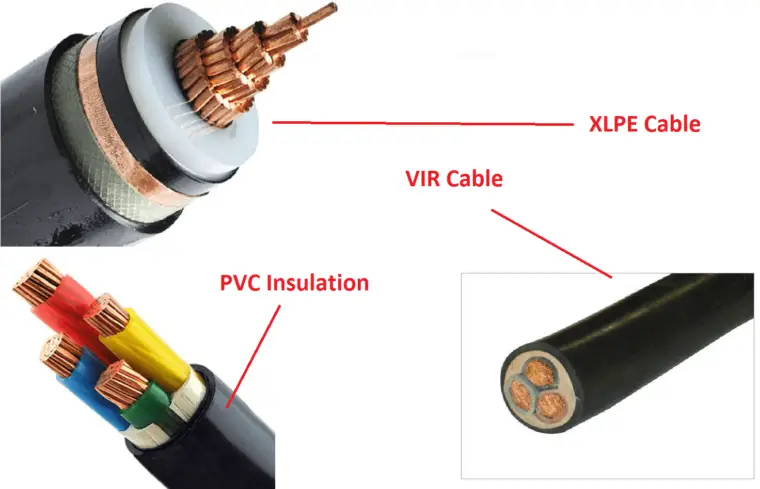
The insulation used to protect the conductor from touching foreign particles. The voltage level of the cable depends on the insulation level only. Based on insulation, cables are classified as
- Vulcanized Indian rubber cables: A small VIR coating of the tinned conductor is called VIR cables. They are used for house wiring. The main disadvantage of VIR is high Sulphur content corrode the copper. They are not suitable for industrial applications.
- PVC insulated cables: Poly Vinyl Chloride material is used as insulation. They are suitable for both domestic and industrial applications. The cable withstands up to 75deg. But they are not suitable for high voltage and high power applications.
- XLPE cables: A cross-linked polyethylene is called as XLPE cables. They withstand up to 90deg and having a dielectric strength of 20kV/mm. These cables have been found very suitable for all voltages up to 33 kV.
- Lead sheathed cables: The lead layer is used as insulating material. It is suitable for instrumentation cables.
- Paper insulated cables: Impregnated paper is used as insulation material and having good temperature proper as well as dielectric strength of 30kV/mm.
- Oil-filled cables: It used in high voltage applications. Oil is used as an insulation medium.
- External Pressure cables: High-pressure gas+ insulating oil is used as insulation material.
Based on Conductor:
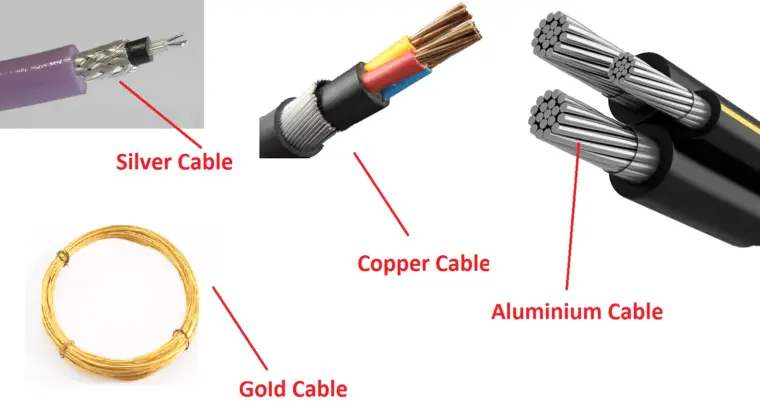
A conductor is a current-carrying part of the cable. Also, the type of cable is varied based on the type of conductor is used. They are,
- Aluminium Cable: Aluminum is used as a conductor. They have the advantage of less cost, flexibility, less weight, etc. power the power loss is high as compared with copper.
- Copper cable: Copper is used as a conducting medium. Less power loss, high current carrying capacity are the main advantage of copper cable. They are high cost
- Silver Cable: Silver is used as a conducting medium. They are costly, power loss is less and mainly used in instrument cables.
- Gold cable: Gold is used as a conducting medium. Very high cost, less power loss and mainly used in satellite communications.
Based on Number of conductors:
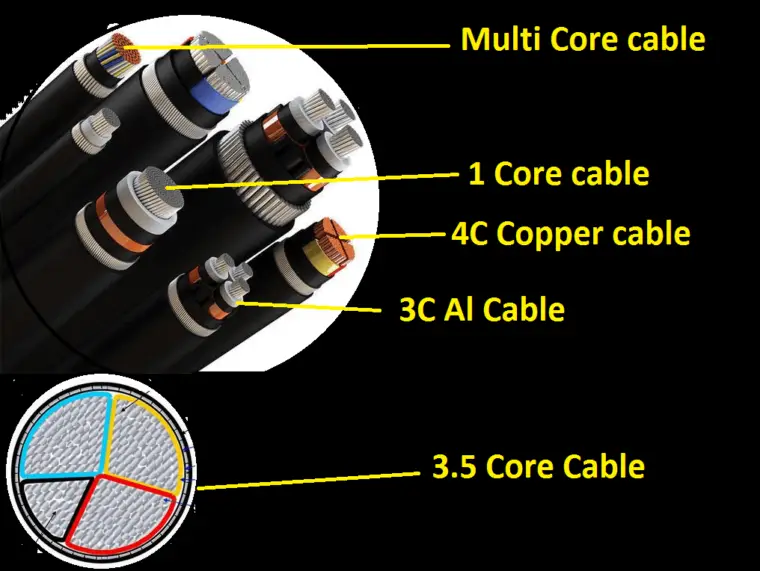
Cables can be classified based on the number of conductors is used in it. They are,
- Single Core: Only one conductor is used for internal house wiring, starter wiring, panel wiring, etc. Example: 1C*2.5sqmm cable
- Two core: Two conductors are used for transferring electricity. They are mainly used to transferring single-phase supply, DC supply, two-phase supply, etc. Example: 2C*4sqmm cable
- Three core: Three conductors are used to transfer three-phase supply. 3C*6 Sqmm cable
- Three and a half core: Three sold core and one is half of the core is called three and a half core. They are used for transferring Three-phase + Neutral supply. Example: 3.5C*10sqmm
- Four core: 4 cores are used in a single cable. Example: 4C*120sqmm
Based on the construction:
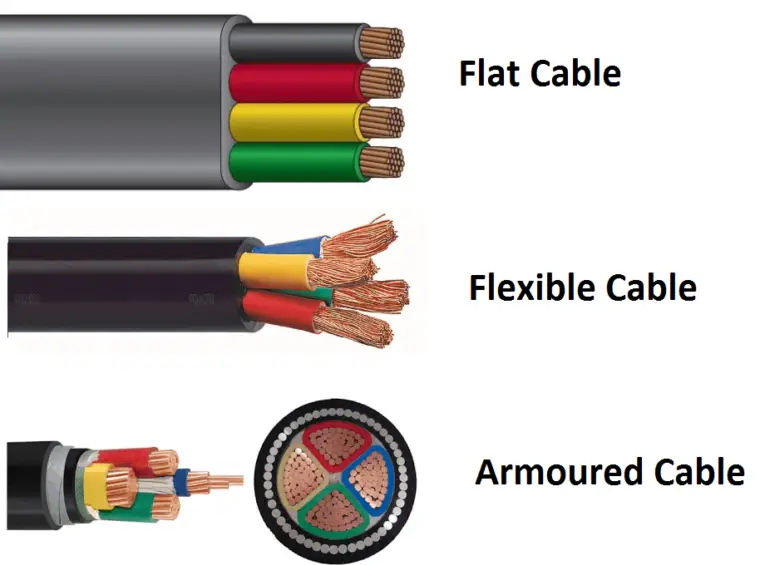
Construction point of view the type of cable are,
- Flat cable: All the core in the cable will be placed in the parallel line. They can be laid on the open ground.
- Flexible cable: The flexible does not come with the protection armored layer.
- Armored cable: The metal armored is used as the protection layer which protects the cable from physical damage.
Interview Question:
- Why electrical cables are round?
- To increase flexibility and physical strength.
- Reduce the electrostatic stress.
- Consume less amount of insulation.
- What is H type cable?
The three individual core is screened along with the overall sheath such cables are called H-type cable.
- What is SL Type Cable?
The three individual core is screened along with the individual sheath such cables are called SL type cable.
- What is HSL Type cable?
It is a combination of H and SL Type. Three core individually screened along with the indicial sheath and over sheath.
- Who is the best cable manufacturer?
I have experienced with Finolex, RPG, Polycap, etc. But Polycap is the best one.
- How to calculate the current carrying capacity of the cable?
The current carrying capacity varies according to the manufacturer. You can read this detailed article.
- How to check the cable insulation strength?
By using a megger, you can check the insulation level.
- Can we load current for the full rating of the cable?
No, Do not load the cable more than 65% of its maximum.
- Can we use 4 core cable for 3phase and Neutral connection?
Yes, you can use it.
- Difference between Cable and Wire?
Wire is a single part of the cable. Cable carry high current and wire carries smaller current.


![What is Normally Open & What is Normally Closed [Video Included] What is NO and NC](https://electrical4u.net/wp-content/uploads/2020/09/What-is-NO-and-NC-218x150.png)





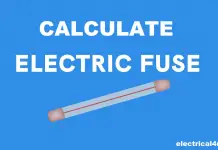
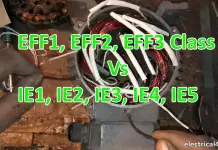



Nice explaination
Thanks for your comment comment
The information is helpful tq soo much🥰